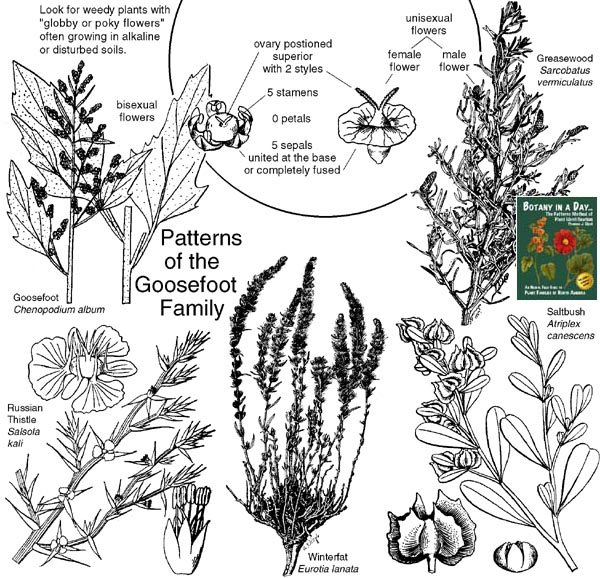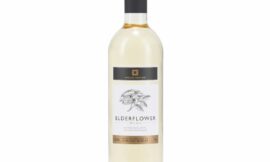
I hate to do this to you, but it’s November and we’re pretty much at a place where we’re no longer recalling this past year’s wildflowers with a misty sigh, but beginning to anticipate next year’s bounty. And since I’ve written about a bit of myth and folklore already, it’s only fair – and sometimes bein’ fair ain’t all it’s cracked up to be – that I now dwell on a plant family or two.
First, we have the Goosefoot Family (Chenopodiaceae … wow, how do ya get your tongues around a word like that?). It’s a family of about 1,400 species in over 100 genera, many of which grow along seashores and others salty places. Plants are usually succulent herbs with clusters of minute greenish flowers.
The flowers are usually radially symmetrical with up to five sepals (sometimes there are none), one to five stamens and no petals. The fruit is tiny and one-seeded.
Many plants in this family are abhorred weeds, but some are used as ornamentals. Some garden produce such as beets and spinach are members of the clan.
One family member, Lamb’s Quarters or Pigweed (Chenopodium album) is a ubiquitous weed found throughout North America. It grows along roadsides as well as in disturbed and cultivated areas. It is unremarkable and easily ignored (unless it is ruining the Feng Shui of your yard, I guess.)
Somewhat less unremarkable and a bit less easily ignored are some members of the Rockrose Family (Cictaceae). This is a clan of only about 200 species in 8 genera.
These are herbs or shrubs with flowers in clusters or borne singly. The flowers are radially symmetrical with three large sepals and two smaller or absent sepals. There are usually five separate petals, but sometimes there are fewer. Also, there are many stamens, and all these parts are attached at the base of the ovary.
Plants in this family are found mostly in dry, sunny locations. Often they are in chalky or sandy soil.
Frostweed (Helianthemum canadense), a summer-blooming species, tops the end of its primary stem with a solitary yellow flower. Later in the season clusters of small, bud-like flowers pop up out of the leaf axils.
It generic name refers to its love of sunny locations; its common name refers to the ice crystals which form late in the autumn, where the sap oozes from cracks near the base of the stem.
Neither of these plant families is particularly noteworthy where chasing wildflowers are concerned. Or I am a botanical bigot.
… and as far as recalling last year’s wildflowers, fear not, I’ll wax nostalgic before the year’s out.
“Plant Families: Chenopodiaceae and Cistaceae” (c) 2003 Gregg M. Pasterick – All Rights Reserved.




